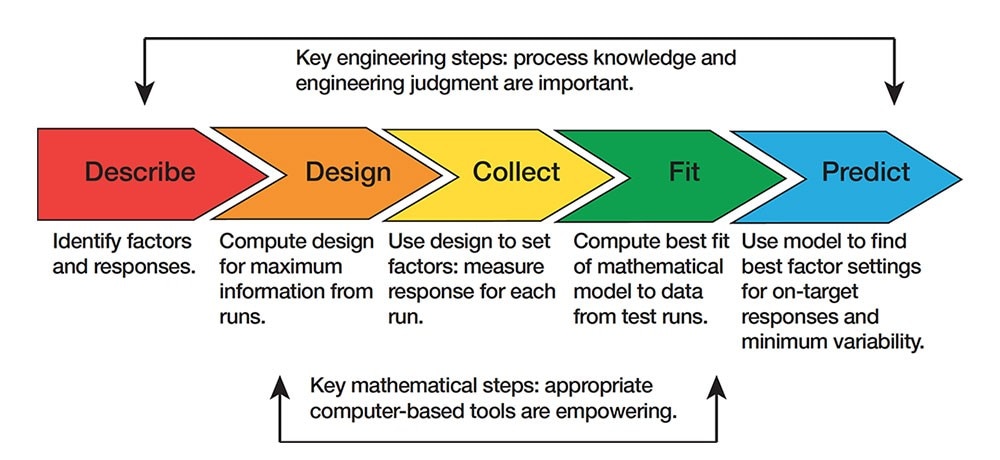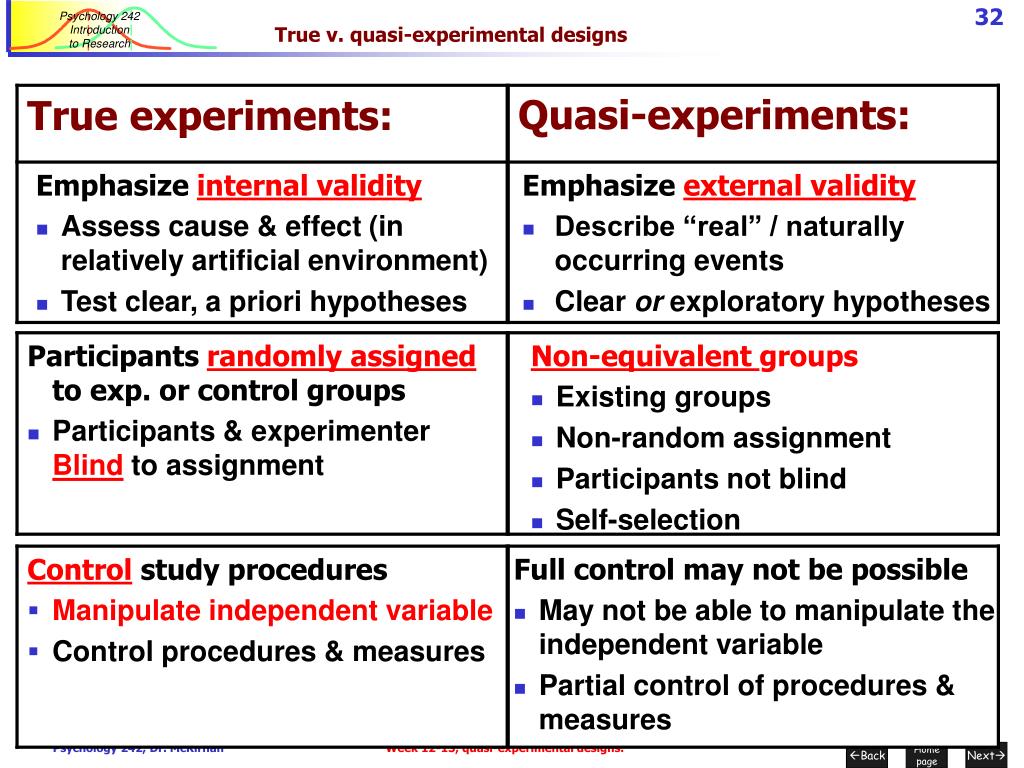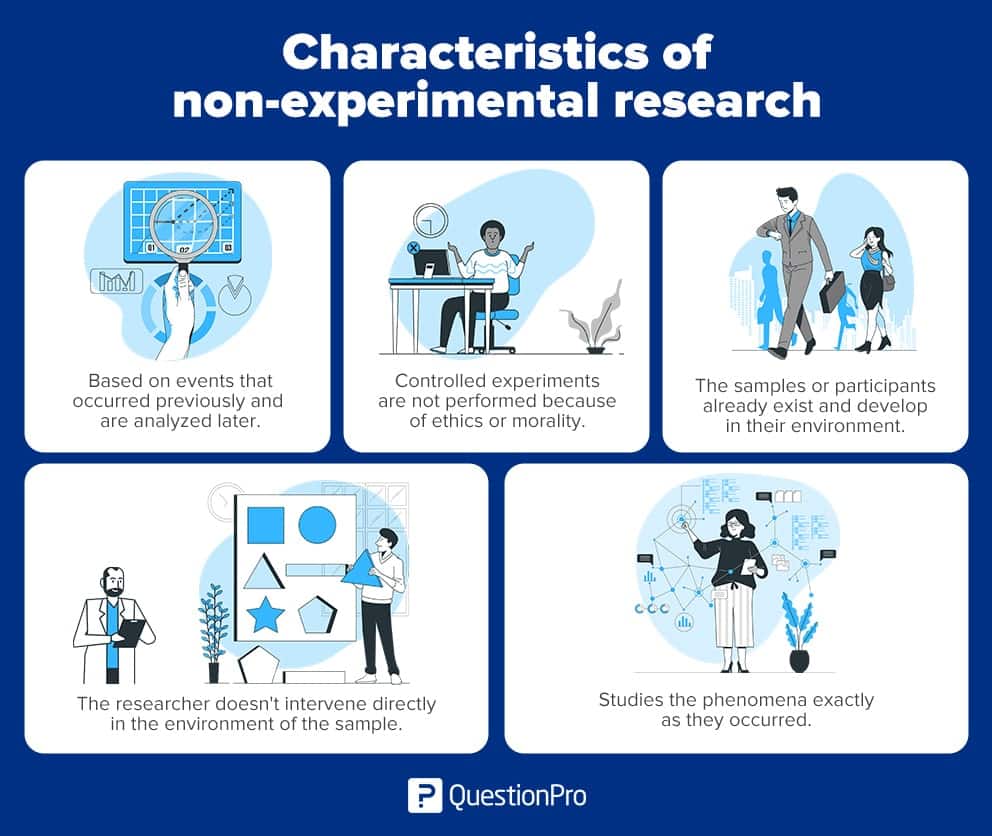Table Of Content

Computerized measures involve using software or computer programs to collect data on participants’ behavior or responses. These measures may include reaction time tasks, cognitive tests, or other types of computer-based assessments. This involves dividing participants into subgroups or blocks based on specific characteristics, such as age or gender, in order to reduce the risk of confounding variables. Replication involves conducting the same experiment with different samples or under different conditions to increase the reliability and validity of the results. Blinding involves keeping participants, researchers, or both unaware of which treatment group participants are in, in order to reduce the risk of bias in the results. In this design, the researcher manipulates one or more variables at different levels and uses a randomized block design to control for other variables.

Randomisation
Experiments are always context-dependent, and a good experimental design will take into account all of the unique considerations of your study system to produce information that is both valid and relevant to your research question. Finally, you need to decide how you’ll collect data on your dependent variable outcomes. You should aim for reliable and valid measurements that minimise bias or error.
Posttest-only control group design
No matter the kind of absurd behavior that is exhibited by the subject during this period, its condition will not be changed. Experimental research design can be majorly used in physical sciences, social sciences, education, and psychology. The choice of setting used in research depends on the nature of the experiment being carried out. However, this may be influenced by factors like the natural sweetness of a student. For example, a very smart student will grab more easily than his or her peers irrespective of the method of teaching.
Examples of Simple Experiments in Scientific Research - Verywell Mind
Examples of Simple Experiments in Scientific Research.
Posted: Thu, 10 Aug 2023 07:00:00 GMT [source]
Article Metrics
Next is a paragraph detailing who the participants were and how they were selected, placed into groups, and assigned to a particular treatment order, if the experiment was a repeated-measures design. And although not a part of the design per se, a statement about obtaining written informed consent from participants and institutional review board approval is usually included in this subsection. Thus, while designing a study it is important to take measure to limit bias as much as possible so that the scientific validity of the study results is preserved to its maximum. Regression analysis is used to model the relationship between two or more variables in order to determine the strength and direction of the relationship. There are several types of regression analysis, including linear regression, logistic regression, and multiple regression. Inferential statistics are used to make inferences or generalizations about a larger population based on the data collected in the study.
Researchers should state and reference the statistical package and procedure(s) within the package used to compute the statistics. “Statistical Design” or, preferably, “Statistical Analysis” or “Data Analysis” should be the last subsection of the “Methods” section. It directs the experiment by orchestrating data collection, defines the statistical analysis of the resultant data, and guides the interpretation of the results.
Randomization is a well‐established methodology adopted in research to prevent bias due to subject selection, which may impact the result of the intervention/experiment being studied. It is one of the fundamental principles of an experimental study designs and ensures scientific validity. It provides a way to avoid predicting which subjects are assigned to a certain group and therefore, prevent bias on the final results due to subject selection.

These do not try to answer questions or establish relationships between variables. Examples of descriptive studies include case reports, case series, and cross-sectional surveys (please note that cross-sectional surveys may be analytical studies as well – this will be discussed in the next article in this series). Examples of descriptive studies include a survey of dietary habits among pregnant women or a case series of patients with an unusual reaction to a drug. In a within-subjects design (also known as a repeated measures design), every individual receives each of the experimental treatments consecutively, and their responses to each treatment are measured. You manipulate one or more independent variables and measure their effect on one or more dependent variables.
How do I design research for an experimental research design in the marketing and tourism field? - ResearchGate
How do I design research for an experimental research design in the marketing and tourism field?.
Posted: Thu, 01 Dec 2022 08:00:00 GMT [source]
It involves a lot of resources, time, and money and is not easy to conduct, unless a foundation of research is built. Yet it is widely used in research institutes and commercial industries, for its most conclusive results in the scientific approach. To publish significant results, choosing a quality research design forms the foundation to build the research study. Moreover, effective research design helps establish quality decision-making procedures, structures the research to lead to easier data analysis, and addresses the main research question. Therefore, it is essential to cater undivided attention and time to create an experimental research design before beginning the practical experiment.
Enago Academy's Most Popular Articles
If you cannot manage the ethical norms along with your research study, your research objectives and validity could be questioned. The ultimate goal of a research experiment is to gain valid and sustainable evidence. Therefore, incorrect statistical analysis could affect the quality of any quantitative research. An experimental research design helps researchers execute their research objectives with more clarity and transparency.
It has relevant features that will aid the data collection process and can also be used in other aspects of experimental research. This is very common in educational research, where administrators are unwilling to allow the random selection of students for experimental samples. In a static-group comparison study, 2 or more groups are placed under observation, where only one of the groups is subjected to some treatment while the other groups are held static.
When you have a clear idea of how to carry out your experiment, you can determine how to assemble test groups for an accurate study. Depending on your experiment, your variable may be a fixed stimulus (like a medical treatment) or a variable stimulus (like a period during which an activity occurs). Researchers perform a test at the end of the experiment to observe the stimuli exposure results. Random selection removes any potential for bias, providing more reliable results.
The variable the experimenter manipulates (i.e., changes) is assumed to have a direct effect on the dependent variable. To assess the difference in reading comprehension between 7 and 9-year-olds, a researcher recruited each group from a local primary school. They were given the same passage of text to read and then asked a series of questions to assess their understanding. We expect the participants to learn better in “no noise” because of order effects, such as practice. Repeated Measures design is also known as within-groups or within-subjects design. Usually, researchers miss out on checking if their hypothesis is logical to be tested.

No comments:
Post a Comment